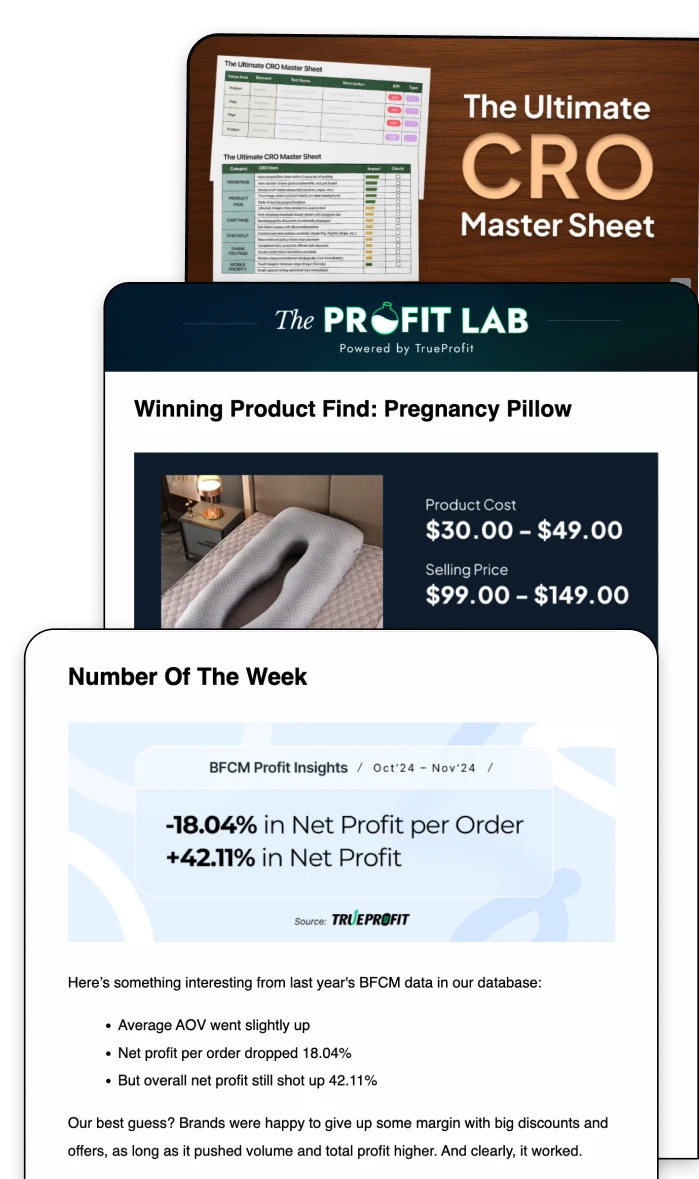Is Print On Demand Still Profitable in 2025? Challenges & How to Overcome
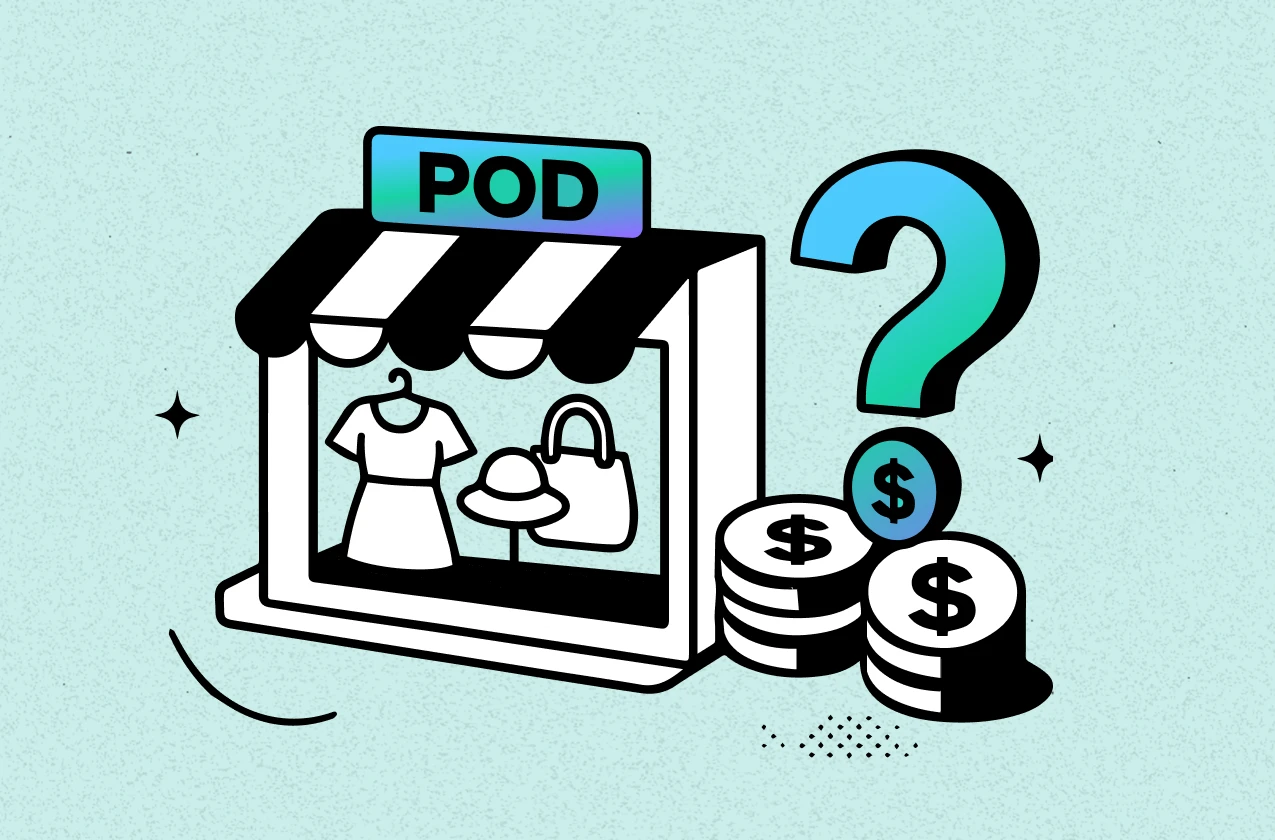
In 2025, print on demand (POD) has become one of the most talked-about ways to start a side hustle project and quickly quit your 9-to-5 job. With no upfront inventory costs and the freedom to sell everything from t-shirts to mugs, it sounds like an easy path to profit.
But is POD truly profitable?
Let’s break it down.
Is Print on Demand Profitable?
Print on demand (POD) can absolutely be profitable—and the market itself shows why. Industry research from MarketWatch projects the global POD market to reach over $39 billion by 2033, driven by solo creators, artists, artisans, and e-commerce brands customizing everything from apparel to home goods. That means there’s plenty of room to build a profitable business in the POD market.
Compared to other models, POD is much simpler: Literally, it’s a form of dropshipping where retailers sell their own designs on products like apparel, mugs, or wall art. That said, profit margins in print-on-demand are usually low to moderate. The good gross & net profit margin for POD is usually 60-70% gross & 20-40% net across all the products.
What is the Average Monthly Income of a POD Business Owner?
While it’s easy to get started, the “POD millionaire dream” doesn’t happen to anyone. The truth is: most POD stores earn very little at first.
Many sellers make under $100 a month during their first year.
A few manage to reach $1,000–$3,000 per month after consistent effort.
Experienced sellers can earn $10,000 or more per month.
Meanwhile the highest-tier POD store can totally generate $20,000–$80,000 in monthly revenue, yet they are considered outliers because they combine business management skills, creative marketing strategy, and long-persistence in ways most sellers do not.
What are the Biggest Challenges in Starting a POD Business?
While POD is low-risk in terms of upfront investment, there are hidden challenges that new sellers often overlook:
1. High Competition and Market Saturation
The print-on-demand industry is one of the most competitive corners of eCommerce. There are billions of stores online, many of which are generic shops offering similar products, from custom t-shirts and mugs to phone cases and tote bags. It’s because anyone can start a POD store with little upfront cost, the barrier to entry is almost nonexistent. That sounds appealing to beginners, but it also means the flooded generic sellers will drive down prices and squeezes profit margins
2. Low Profit Margin
Slim net profit margins are part of the game—every item is custom-printed only after a customer places an order, which means suppliers charge more per unit compared to bulk manufacturing. Margins can get even tighter with certain product categories like mugs, posters, or phone cases, and since POD has no economies of scale (you pay per item, not per batch), there’s little room to negotiate lower costs unless your store is consistently producing high volume.
3. Dependence on Product Uniqueness
In print-on-demand, generic designs rarely sell. The POD success often comes down to two factors: how unique your designs are and how well you understand fashion and consumer taste. Yet, even if you think your design is new, chances are dozens of similar ones already exist. POD platforms are filled with trending quotes, memes, and graphics, and new sellers often recycle the same ideas.
5 Key Insights to Own a Successful POD Store
Here are some key tips for sellers who want to succeed despite the competition, slim margins, and design pressures:
1. Niche Down Hard
It’s tempting to launch a store full of “funny t-shirts” or “coffee mugs” that you think anyone could buy. But the reality is, those broad markets are already dominated by established sellers with thousands of reviews and massive ad budgets. If you don’t narrow your focus, you’ll end up competing on price alone—and with slim margins, that’s a losing game.
Niching down means going after a specific audience with a shared identity, passion, or lifestyle. Instead of designing for “all pet lovers,” think smaller: “funny cat mom sweatshirts,” “aesthetic French bulldog art prints,” or “streetwear-style hoodies for dog trainers.” By speaking directly to a defined group, your products instantly feel more personal and relevant—which is what drives sales in POD.
2. Make Design That Lits
For a design to actually sell in POD, it needs to satisfy two factors: visual polish and market fit.
First, visual polish. Customers may not be professional designers, but they can instantly tell the difference between a rushed Canva mockup and a design that feels professionally crafted. Poor font choices, clashing colors, or awkward placement on a shirt can make your product look cheap and unwearable. A clean, balanced design, on the other hand, elevates even the simplest product and makes it feel “worth buying.”
Second, market fit. Market fit means creating something that feels personal and relevant to the people you’re targeting. A cat lover doesn’t just want a generic “I love cats” shirt—they want something witty, stylish, or niche-specific that feels like it was designed just for them.
Remember, you always need both in one design. Visual polish without market fit is like a beautifully made product no one wants. Market fit without polish is something that feels cheap, and customers won’t pay for it. Only when both factors come together do you get a design that feels wearable, giftable, and worth the price.
3. Chase Trends Smartly
The real key is staying relevant without becoming another forgettable copy. In practice, that means using tools like TikTok hashtags, Etsy search data, or Google Trends then adding your own creative spin instead of copying what’s already out there.
Strategic trend-following also means being selective. Not every viral moment is worth chasing. A good filter is to ask: Does this align with my niche? Will this still resonate in a month? By focusing only on trends that overlap with your audience’s identity or values, you avoid the trap of one-hit products that fade as quickly as they appeared.
4. Invest on Branding
Design is important, that said, design alone rarely builds a sustainable business in such a saturated POD market. What truly separates successful sellers is branding and storytelling—the consistent identity includes visuals, tone, values and the narrative that explains why your brand exists and who it’s for. Together, these two elements will directly influence key performance metrics like customer acquisition cost (CAC), conversion rate (CVR), customer retention rate (CRR), and customer lifetime Value (CLV), and ultimately boost your store's total sales.
5. Stay Ahead of Profit Margin
In POD, profit disappears fastest when you don’t track it. Not even to say that the POD markets shift quickly—what worked last month may flop today. Weekly or biweekly reviews of your store’s KPIs—like CAC vs. CLV, product-level margins, and ad efficiency— help you catch trends early, cut losses, and double down on what drives sustainable growth.
3 Best Examples of A Good Print-on-Demand Store
Looking at real POD stores is one of the best ways to see how this business model plays out in practice. Each of the following examples highlights a different way to approach POD—and what sellers can learn from them.
1. The Happy Givers— Minimalist POD Apparel
The Happy Givers is a print on demand (POD) store that sells apparel and accessories—mainly t-shirts, hoodies, and mugs—featuring bold typography, meaningful phrases, and minimalist graphics. At its core, it’s a POD brand, but 100% of its profits are donated to nonprofit projects in Puerto Rico, Peru, and Mexico, providing hot meals and social services to the elderly, running community farms, supporting rebuilding projects, and empowering migrants.
Of course, The Happy Givers is a very unique case. Not every POD seller can—or should—donate 100% of their profits to charity. But The Happy Givers is still a valuable example because it shows how a POD brand can stand out in a crowded market.
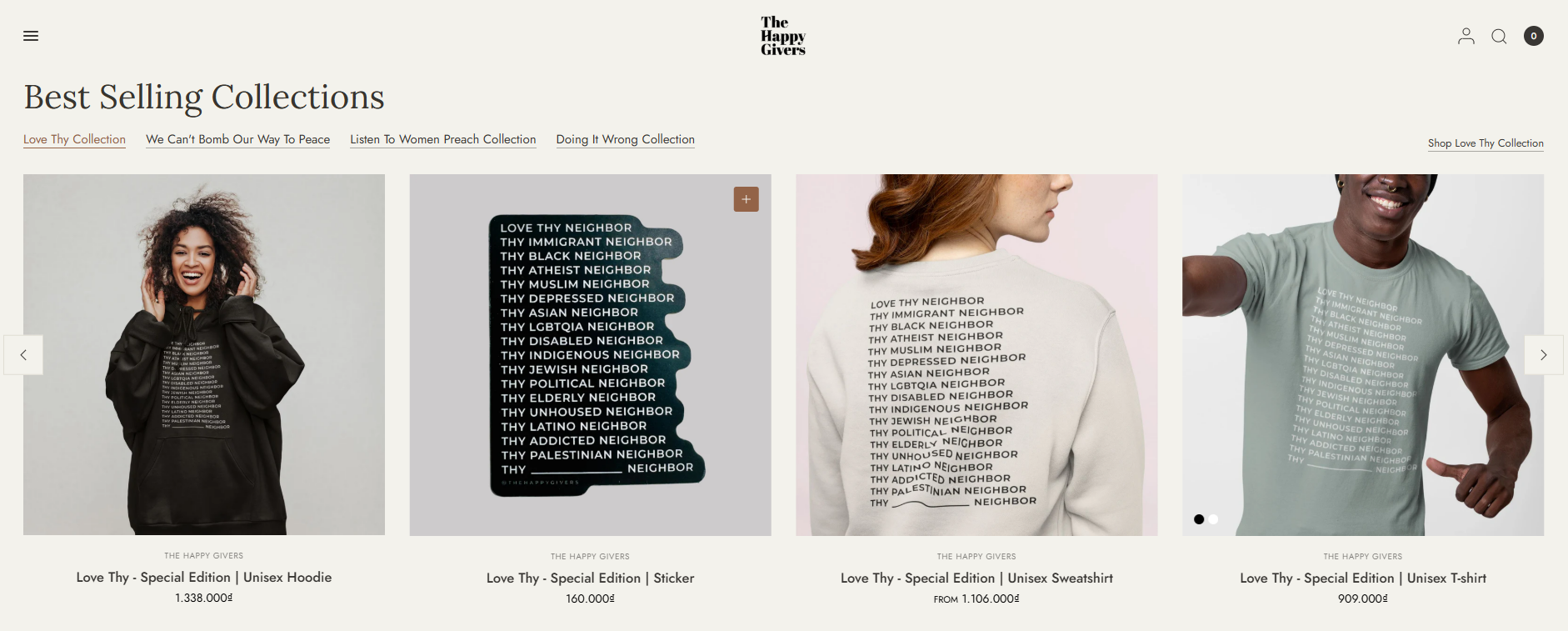
2. The Dumb Club - Deluxe Hoodies POD
Founded in 2020, Dumbclub didn’t begin with products—it began with the viral show Street Smartz and other creative media projects built around a simple but bold idea: greatness starts when you step out of your comfort zone, even if it means looking “dumb.”
From there, the brand evolved into apparel, creating a product line that reflects their ethos. Their signature “Deluxe” hoodies are oversized, fleece-soft, and uniquely designed—an intentional mix of comfort and boldness. Alongside hoodies, they’ve expanded into hats, accessories like stickers (their Be Kind design is a fan favorite), and even gift cards.

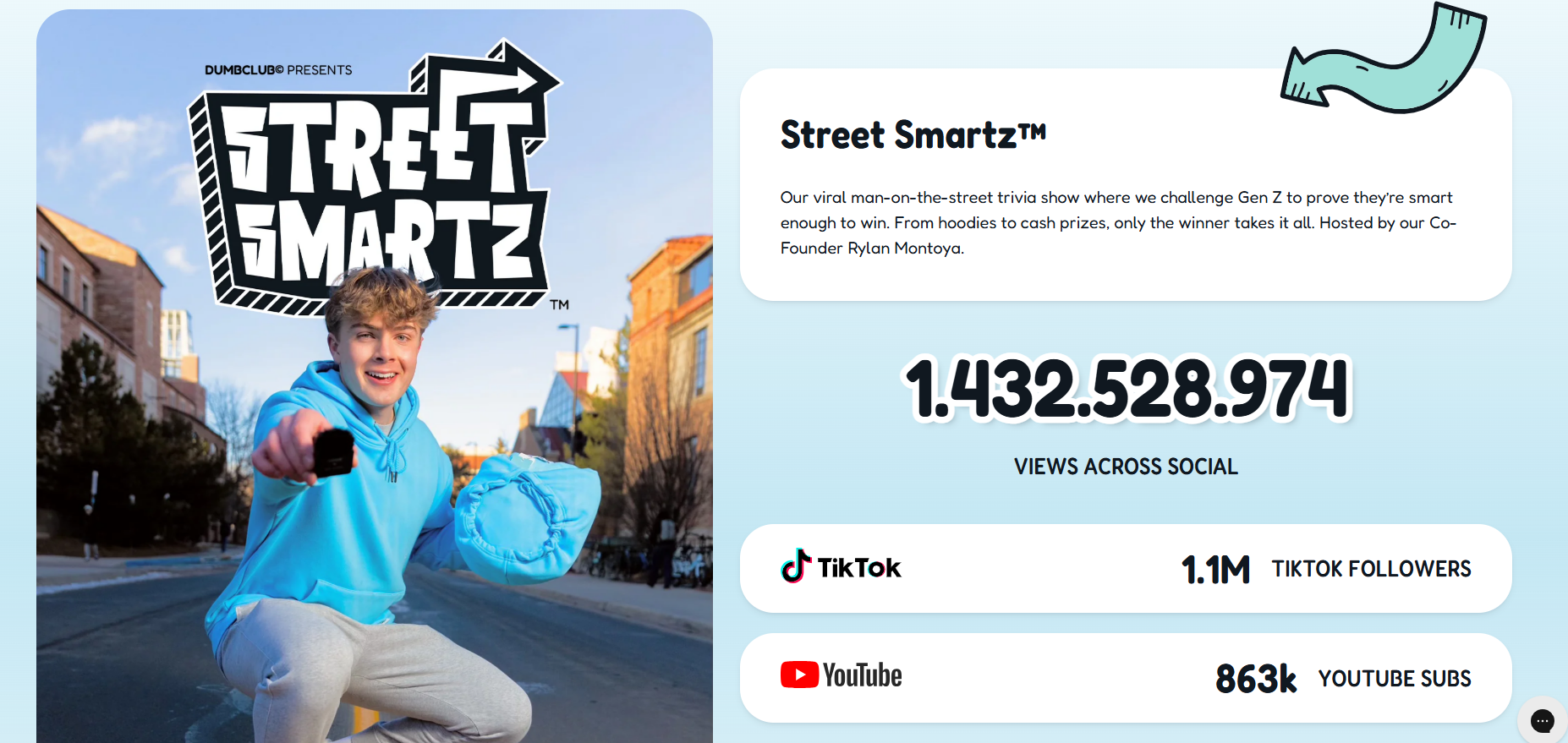
3. WanderPrint - Holiday-Themed POD
Wander Print (often styled as WANDERPRINT) sells exactly what most new POD entrepreneurs think of when they imagine the business—personalized gifts and home décor. From posters and canvas prints to blankets, mugs, and keychains, nearly every item can be tailored with text, quotes, names, or even photos.
Unlike the two above stores, Wander Print’s edge isn’t in content or storytelling but in giving customers endless ways to personalize their purchase. It’s the straightforward POD formula: offer a catalog of customizable items, market them as meaningful keepsakes, and sell through volume.

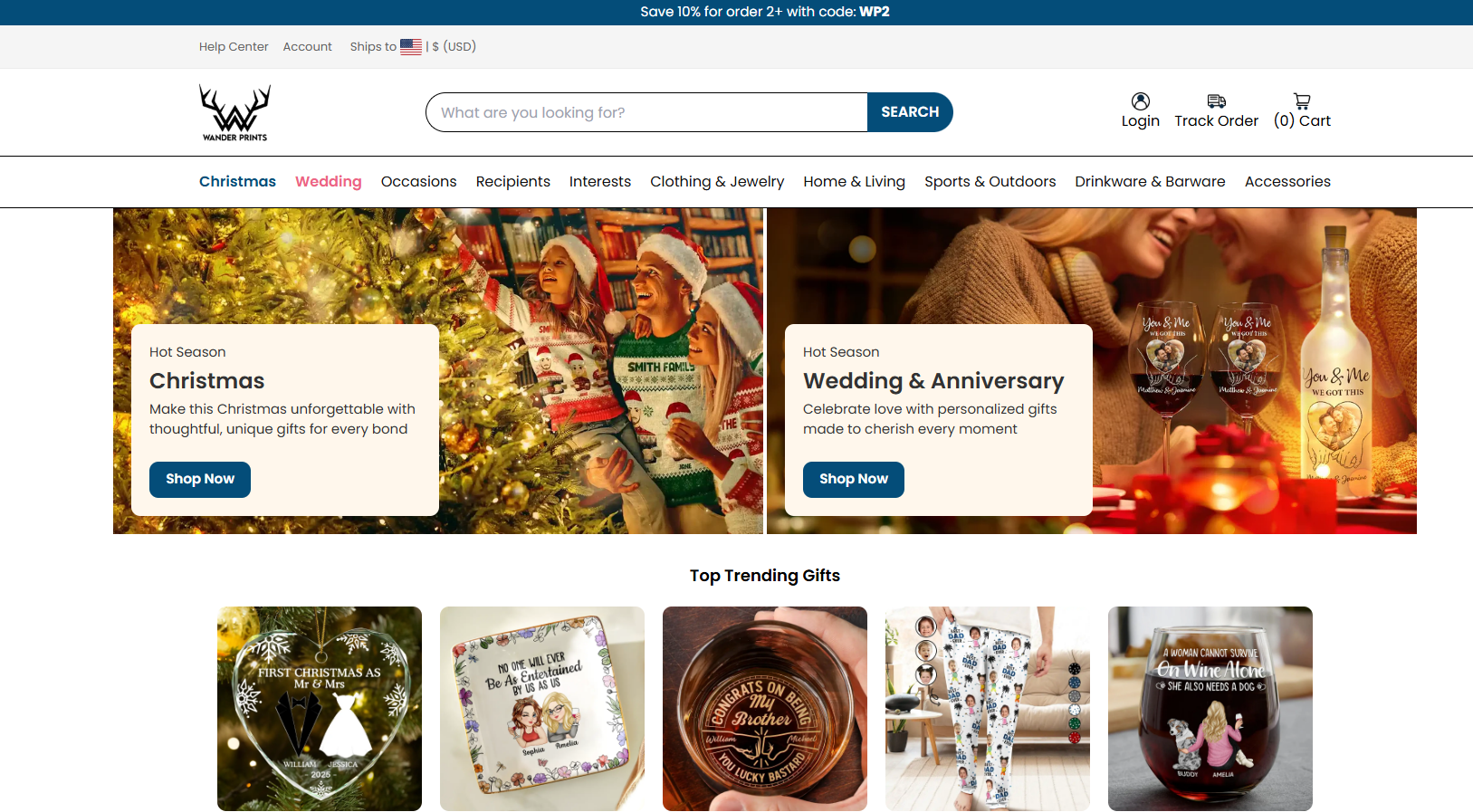
Final Thoughts
In short, starting a print on demand business remains a promising path in 2025. That said, in POD, success isn’t just about launching designs—it’s about constantly monitoring performance and making quick, data-driven adjustments. Because margins can be slim and the competition is fierce, sellers who keep a close eye on their numbers gain a massive advantage over those who rely on guesswork.
That’s where TrueProfit comes in. As the leading net profit analytics tool for Shopify, TrueProfit gives POD sellers complete visibility into their business:
- Expose true profit and losses in real-time
- Monitor profit margins alongside other key performance metrics for a full picture of store health.
- Watch product-level performance to identify true winners worth scaling and cut underperformers before they drain resources.
- Track ad efficiency by its impact on the bottom line, ensuring your marketing spend works to grow profit
With this app, POD sellers can make better decisions—from design launches to ad scaling—that protects your margins and builds long-term sustainability.
Irene Le is the Content Manager at TrueProfit, specializing in crafting insightful, data-driven content to help eCommerce merchants scale profitably. With over 5 years of experience in content creation and growth strategy for the eCommerce industry, she is dedicated to producing high-value, actionable content that empowers merchants to make informed financial decisions.

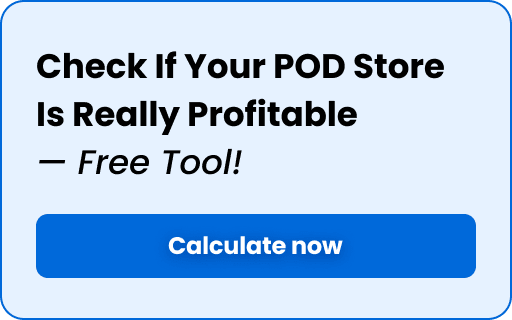


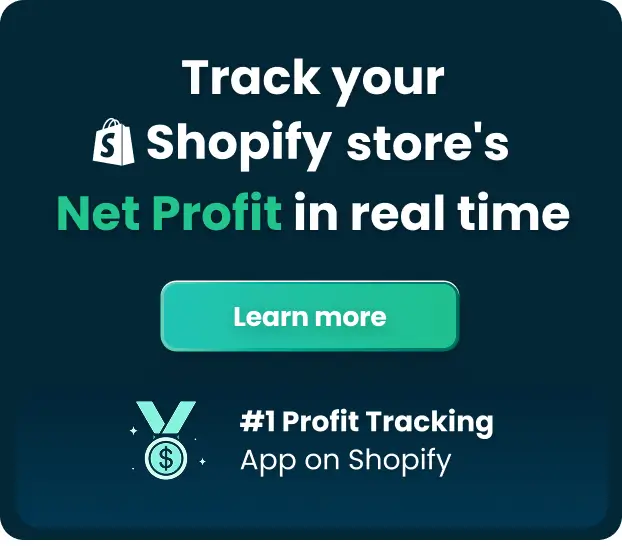
 Shopify profits
Shopify profits